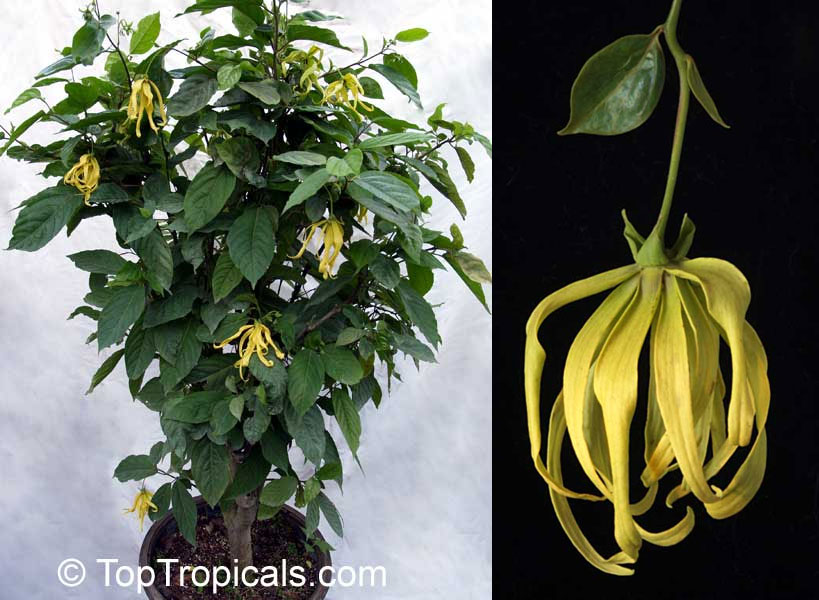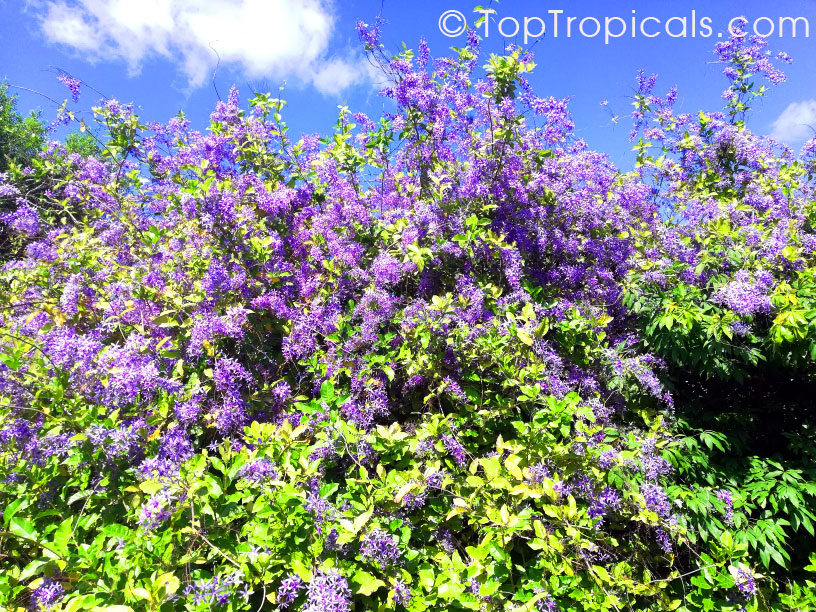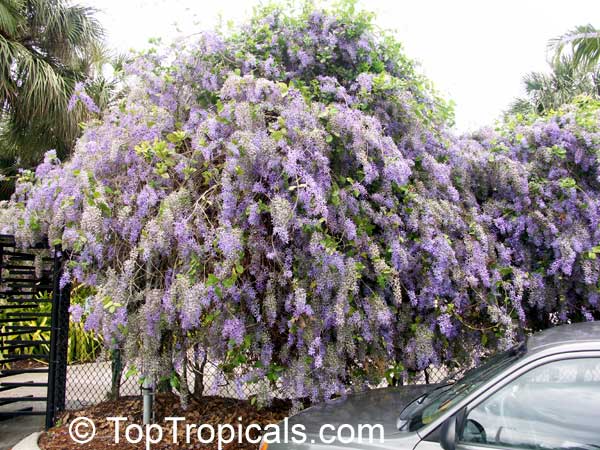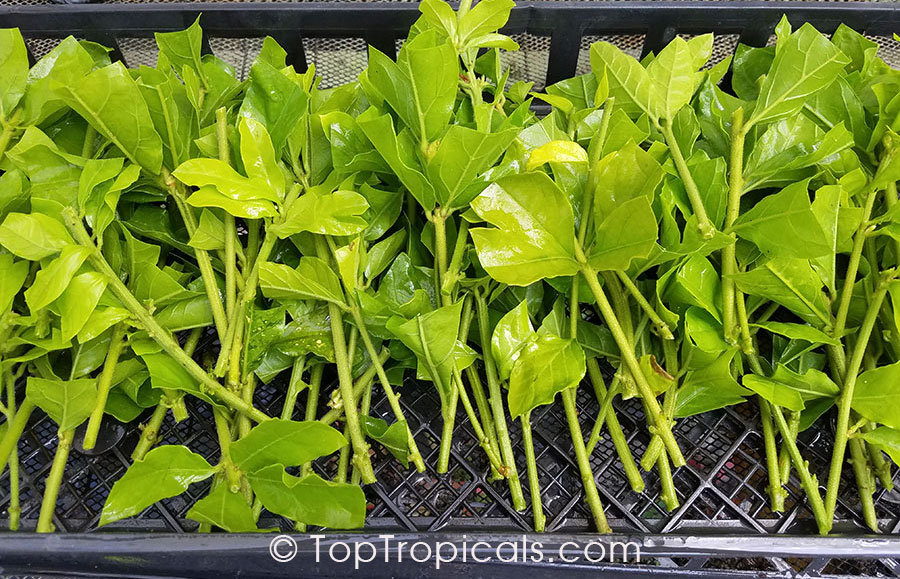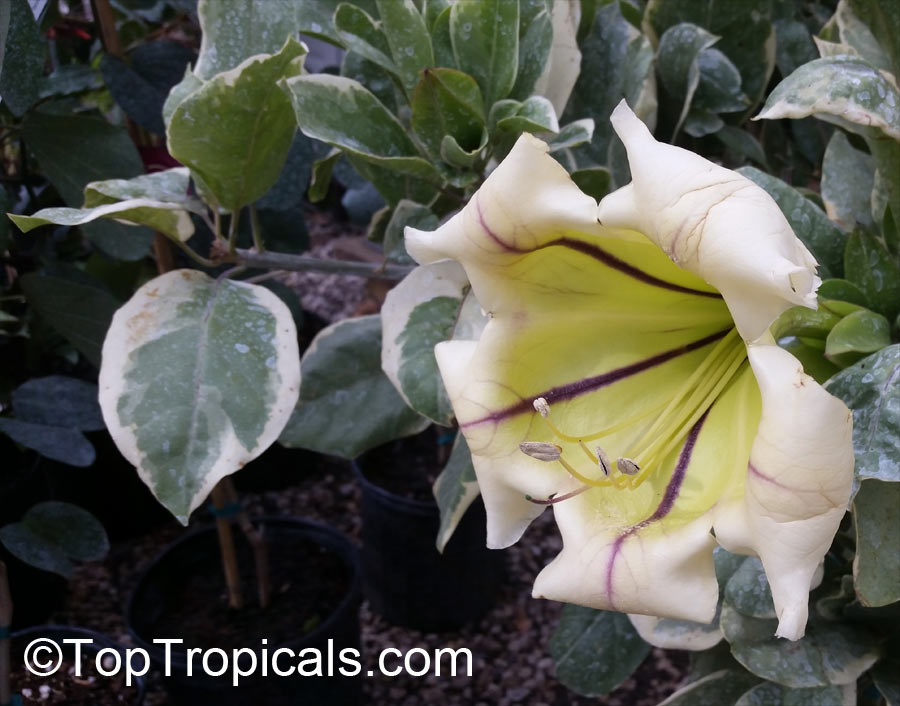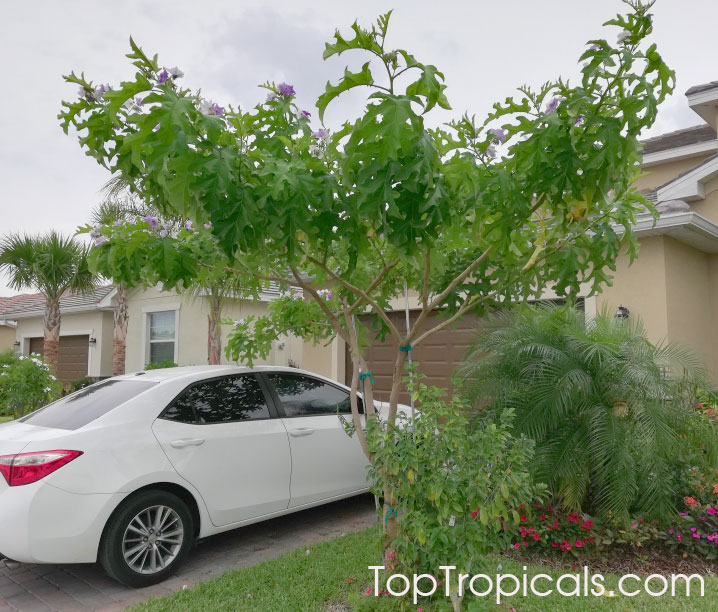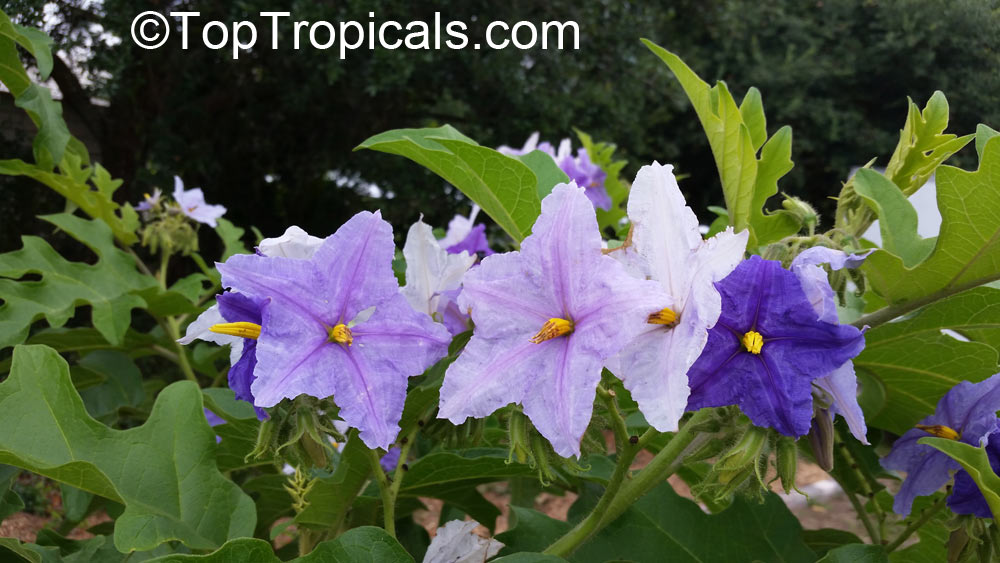Date:
Grafted Guanabana - what is the trick?
Q:Should I buy grafted Guanabana or a seedling? It is a big price difference. I have heard that Annonas fruit within 3 years from seed, why do I need a grafted tree?
A: Annona muricata - Guanabana, or Soursop - is known as the best tasting
Annona fruit. Many fruit lovers and gardeners want to have this tree in their
plant collection, and the first question they always ask is: "How soon will
it fruit? I can't wait to enjoy its deliciousness!"
Most Annonas start flowering and fruiting at a young age, 3-4 years from
seed. Annona muricata seedling takes longer. You may read more information on
how to grow Guanabanas from seed, even in a pot, even indoors - in Tropical Treasures Magazine issue # 7. Although it may take up to 15
years to see the fruit...
Now we have a solution to get this fruit sooner - a grafted tree! It
will fruit within a year after planting. The secret of grafting Guanabana was
almost lost (it's a tricky one to graft) and grafted plants were nearly
impossible to find. Now we have them! Quantities are limited.
Keep in mind that Guanabana is very cold sensitive and won't tolerate
even light freeze. However it is still relatively easy to grow even in
subtropical areas: the tree is small, and if tree grown in ground, a simple cold
protection structure can be built around it using basic wood or pipes (metal or
PVC) and covered with plastic for a few weeks of cold weather. Grafted
Guanabana is also a perfect choice for container culture (hand-pollinating maybe
required).
Photo: This grafted tree was planted less than a year ago, and was covered in winter with cold protection for about 8 weeks. Within a year, it has 4 large fruit on it!
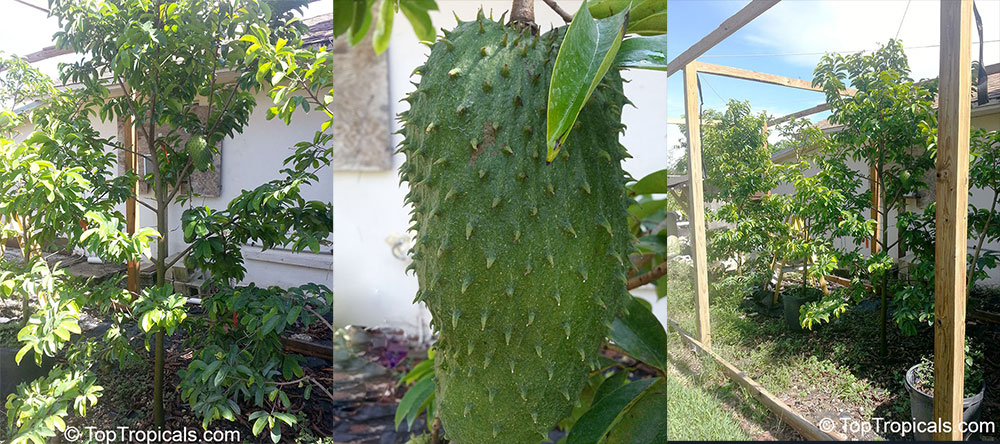

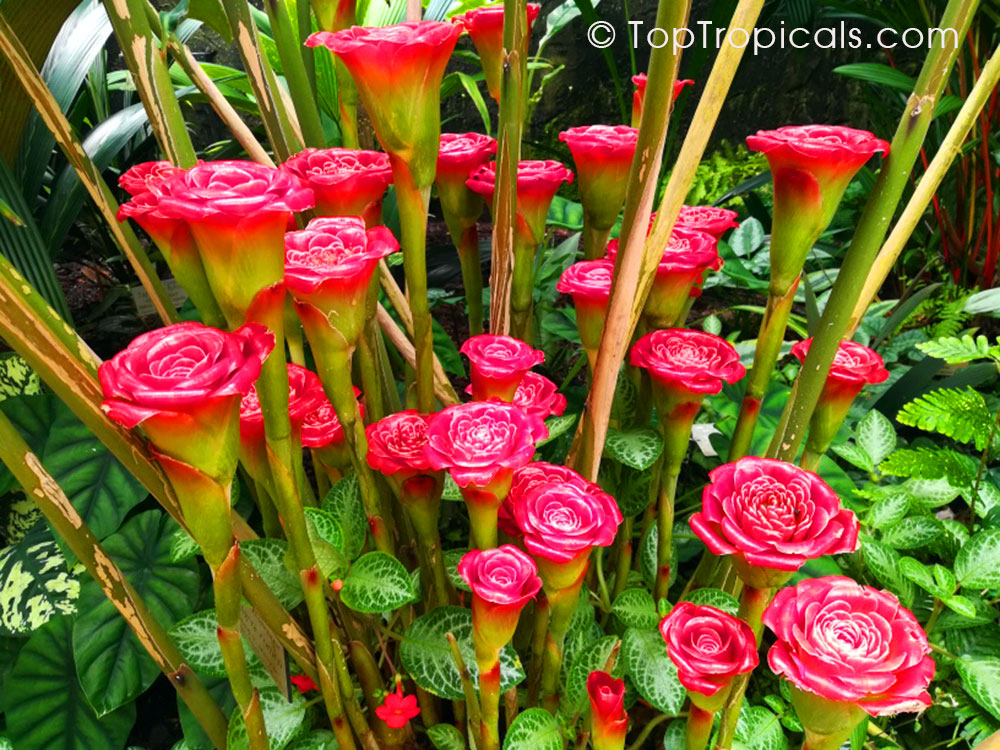
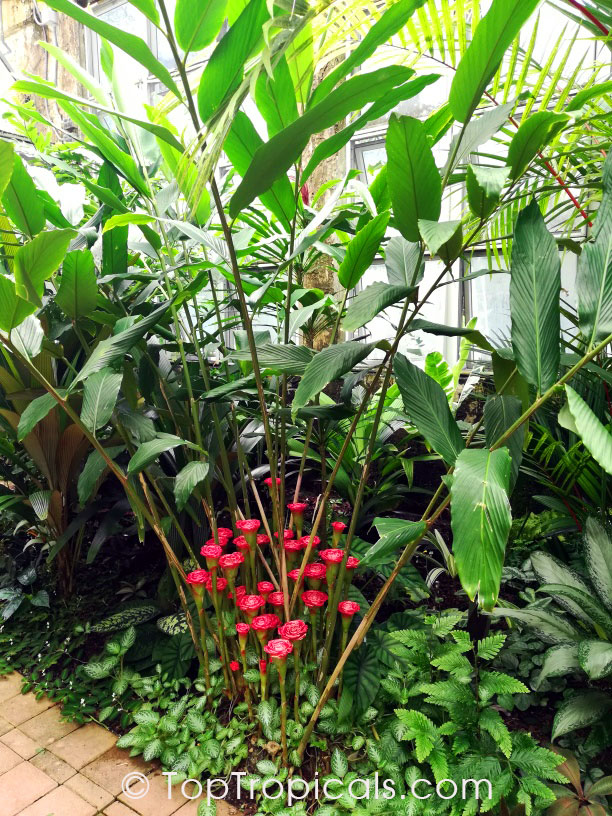
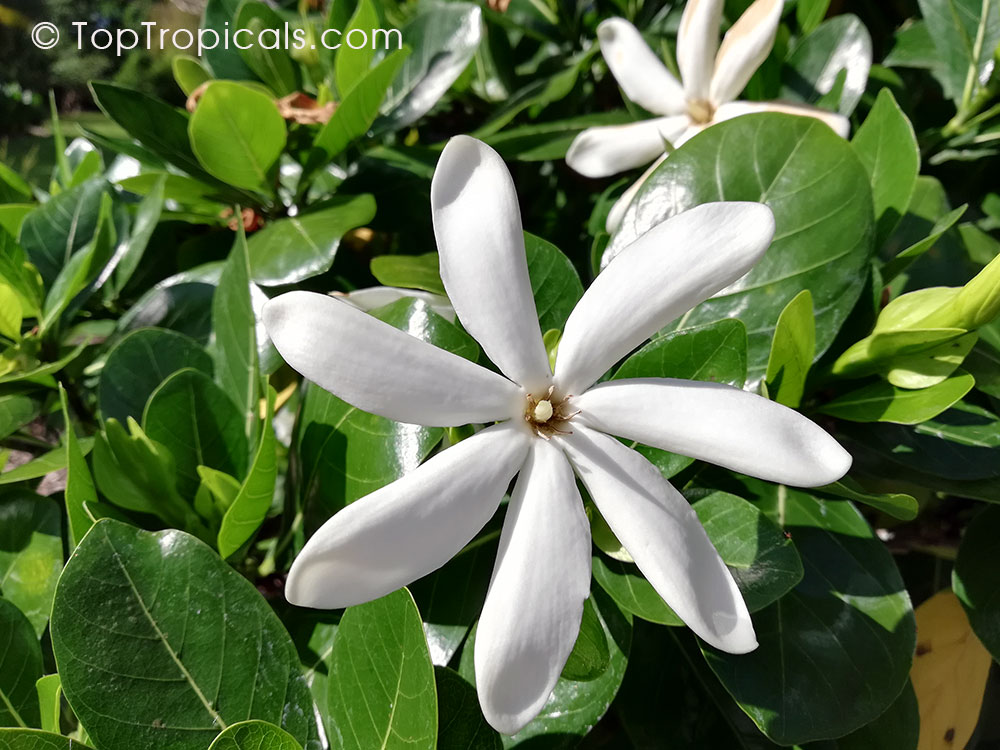
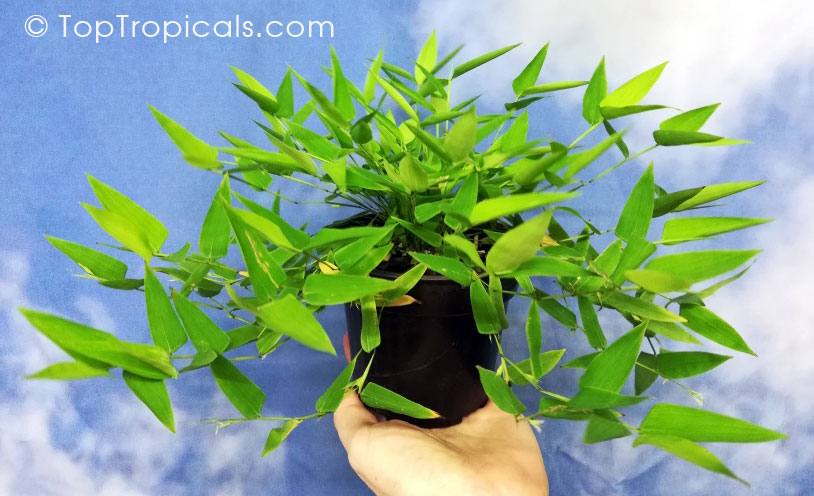
 The missing genetic link is found! The tiny little "
The missing genetic link is found! The tiny little "
